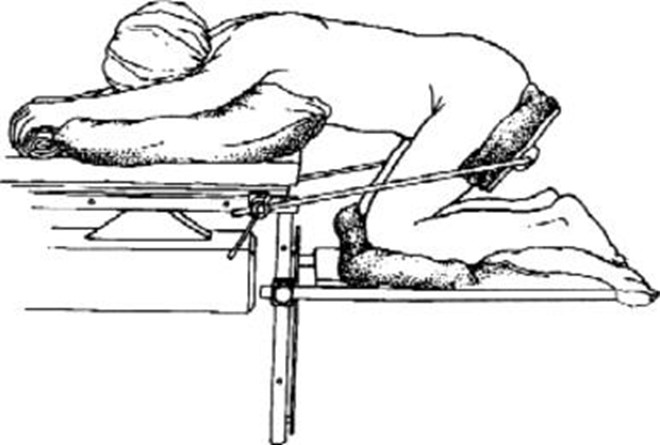A nurse is performing a vaginal exam on a client who is in active labor. The nurse notes the umbilical cord protruding through the cervix. Which of the following actions should the nurse take?
Administer oxytocin to the client via intravenous infusion.
Apply oxygen at 2 L/min via nasal cannula.
Prepare for insertion of an intrauterine pressure catheter.
Assist the client into the knee-chest position.
The Correct Answer is D
Choice A rationale:
Administering oxytocin to the client via intravenous infusion is not appropriate when the nurse notes an umbilical cord protruding through the cervix. The priority is to relieve pressure on the cord to prevent fetal compromise, and administering oxytocin could worsen the situation.
Choice B rationale:
Applying oxygen at 2 L/min via nasal cannula is not the priority when an umbilical cord prolapse is detected. The focus should be on relieving pressure on the cord and changing the client's position to alleviate the compression.
Choice C rationale:
Preparing for insertion of an intrauterine pressure catheter is not appropriate when there is an umbilical cord prolapse. The immediate concern is the potential compromise of fetal blood flow, and addressing the cord prolapse takes precedence over any other interventions.
Choice D rationale:

Assisting the client into the knee-chest position is the correct action when an umbilical cord prolapse is observed during a vaginal exam. This position helps to alleviate pressure on the cord by moving the presenting part of the fetus off the cord and can prevent further fetal distress until more definitive interventions can be performed.
Nursing Test Bank
Naxlex Comprehensive Predictor Exams
Related Questions
Correct Answer is B
Explanation
A. Peanut butter and wheat bread contain high levels of phenylalanine, which should be avoided in clients with phenylketonuria.
B. A sliced apple and red grapes are low in phenylalanine and are safe choices for a client with phenylketonuria.
C. Chocolate, cookies, and milk contain phenylalanine, making them unsuitable for the client.
D. Eggs and cheese are high in phenylalanine and should be restricted in the diet.
Correct Answer is A
Explanation
Choice A rationale:
The nurse should plan to administer Ampicillin to the client with a group B streptococcus (GBS) B-hemolytic infection. Ampicillin is the first-line antibiotic treatment for intrapartum prophylaxis in GBS-positive pregnant women. It helps prevent the transmission of the bacteria from the mother to the newborn, reducing the risk of early-onset GBS infection in the infant.
Choice B rationale:
Azithromycin is not the appropriate choice for treating GBS B-hemolytic infection during labor. While Azithromycin is effective against certain bacteria, it is not the recommended antibiotic for GBS prophylaxis in labor. Ampicillin or Penicillin is the preferred medication in this scenario.
Choice C rationale:
Ceftriaxone is not the appropriate medication for treating GBS B-hemolytic infection during labor. Ceftriaxone belongs to the cephalosporin class of antibiotics and is not the first-line treatment for GBS prophylaxis. Ampicillin or Penicillin is the preferred choice.
Choice D rationale:
Acyclovir is an antiviral medication and is not indicated for the treatment of GBS B-hemolytic infection. GBS is a bacterial infection, and antiviral medications like Acyclovir do not have an effect on bacteria.
Whether you are a student looking to ace your exams or a practicing nurse seeking to enhance your expertise , our nursing education contents will empower you with the confidence and competence to make a difference in the lives of patients and become a respected leader in the healthcare field.
Visit Naxlex, invest in your future and unlock endless possibilities with our unparalleled nursing education contents today
Report Wrong Answer on the Current Question
Do you disagree with the answer? If yes, what is your expected answer? Explain.
Kindly be descriptive with the issue you are facing.
